Charlie Dye (1906-1972) Apaches signed with the artist's device 'Charlie Dye' (lower left) oil on Masonite 21 3/4 x 33 3/4in Painted in 1966. Fußnoten Provenance Collection of Mary F. Dye, the artist's wife. Literature C. Dye, P.E. Weaver, Charlie Dye One Helluva Western Painter, Los Angeles, California, 1981, pp. 29, 135, no. 166, full page color illustration. Charlie Dye was born in the rural town of Canon City, Colorado and worked as a ranch hand from the time he was very young. At about age seven, Dye rode his first horse, Old Navajo, in a few local movie productions. He was a hit with audiences and eventually moved with his mother to California, where he spent downtime on set sketching his home and beloved horse from memory. Longing for ranch-life, by age 17, Dye was a top hand with colts, working at ranches across Southern California, Oregon and Arizona. He even tried rodeoing until a bronc fell on him.1 While recovering from his relatively minor rodeo injuries, a fellow patient lent Dye a book of Charles M. Russell drawings, which sparked the idea to become a professional artist.2 In early 1926, Dye moved to Chicago to attend the Art Institute and American Academy of Art, where he studied under Felix G. Schmidt. Dye also began working as a freelance commercial illustrator. Schmidt moved his studio to New York City in 1935, and Dye followed, working first at a commercial studio, then in partnership with Schmidt in Schmidt Studios, painting illustrations and covers for publications such as The Saturday Evening Post.3 In 1947, Dye moved his family to Virginia to set up his own studio and continued illustrating for New York accounts, including American Weekly and Argosy.4 In 1956, when visiting his ailing sister out west, he was surprised to discover that Western art was selling well in galleries. The market for magazine illustrations was in decline and Dye had always wanted to return to the West so he began making plans for a permanent move, and started painting Western-themed works.5 Fortuitous connections led Dye to two of his longest-standing and successful gallery relationships: first in 1957 with Jane Hiatt at the Village Gallery in Taos, New Mexico; and in 1959 with Bill O'Brien and his O'Brien Art Emporium in Scottsdale, Arizona. Initially the artist split his time between painting and teaching at the Colorado Institute of Art, but by 1962, he was able to paint full-time, and moved permanently to Sedona, Arizona. Surrounded by cattle ranches and landscape, Dye produced some of his finest paintings from this studio, including the present painting, and solidified his legacy in Western art as one of the four founders of the Cowboy Artists of America. Although cowboy scenes are Dye's most frequent subjects, the artist's interest in accurate depictions of the historic Old West extended to compositions featuring Indians as well. In Apaches' Sonoran Desert landscape setting, two mounted Apache scouts pause amidst stately saguaro cacti, while a third scout stands bent toward the ground closely investigating a trail. Scouts played an important and traditional role in Apache communities: they protected clans from enemies, found new campsites, and located and hunted game. In Apaches, Dye arms the scouts with rifles, but perhaps intentionally, he does not provide any further clues about the reason for their expedition. Are they tracking game or a foe? Dye reminisced that while the real Old West days ended before he was born, he had a great time watching as Old Father Time pulled down the curtain.6 Yet his natural affinity from a young age to the West, and particularly to horses, gave Dye "an insider's knowledge to his portraits of both the historic and contemporary cowboy [as well as other Western subjects]."7 Apaches is a nostalgic reminder of a traditional and important role within Apache society, and also features a Dye trademark element: a prominent roan horse. Dye had a particular affinity for roan horses, purportedly bec
Charlie Dye (1906-1972) Apaches signed with the artist's device 'Charlie Dye' (lower left) oil on Masonite 21 3/4 x 33 3/4in Painted in 1966. Fußnoten Provenance Collection of Mary F. Dye, the artist's wife. Literature C. Dye, P.E. Weaver, Charlie Dye One Helluva Western Painter, Los Angeles, California, 1981, pp. 29, 135, no. 166, full page color illustration. Charlie Dye was born in the rural town of Canon City, Colorado and worked as a ranch hand from the time he was very young. At about age seven, Dye rode his first horse, Old Navajo, in a few local movie productions. He was a hit with audiences and eventually moved with his mother to California, where he spent downtime on set sketching his home and beloved horse from memory. Longing for ranch-life, by age 17, Dye was a top hand with colts, working at ranches across Southern California, Oregon and Arizona. He even tried rodeoing until a bronc fell on him.1 While recovering from his relatively minor rodeo injuries, a fellow patient lent Dye a book of Charles M. Russell drawings, which sparked the idea to become a professional artist.2 In early 1926, Dye moved to Chicago to attend the Art Institute and American Academy of Art, where he studied under Felix G. Schmidt. Dye also began working as a freelance commercial illustrator. Schmidt moved his studio to New York City in 1935, and Dye followed, working first at a commercial studio, then in partnership with Schmidt in Schmidt Studios, painting illustrations and covers for publications such as The Saturday Evening Post.3 In 1947, Dye moved his family to Virginia to set up his own studio and continued illustrating for New York accounts, including American Weekly and Argosy.4 In 1956, when visiting his ailing sister out west, he was surprised to discover that Western art was selling well in galleries. The market for magazine illustrations was in decline and Dye had always wanted to return to the West so he began making plans for a permanent move, and started painting Western-themed works.5 Fortuitous connections led Dye to two of his longest-standing and successful gallery relationships: first in 1957 with Jane Hiatt at the Village Gallery in Taos, New Mexico; and in 1959 with Bill O'Brien and his O'Brien Art Emporium in Scottsdale, Arizona. Initially the artist split his time between painting and teaching at the Colorado Institute of Art, but by 1962, he was able to paint full-time, and moved permanently to Sedona, Arizona. Surrounded by cattle ranches and landscape, Dye produced some of his finest paintings from this studio, including the present painting, and solidified his legacy in Western art as one of the four founders of the Cowboy Artists of America. Although cowboy scenes are Dye's most frequent subjects, the artist's interest in accurate depictions of the historic Old West extended to compositions featuring Indians as well. In Apaches' Sonoran Desert landscape setting, two mounted Apache scouts pause amidst stately saguaro cacti, while a third scout stands bent toward the ground closely investigating a trail. Scouts played an important and traditional role in Apache communities: they protected clans from enemies, found new campsites, and located and hunted game. In Apaches, Dye arms the scouts with rifles, but perhaps intentionally, he does not provide any further clues about the reason for their expedition. Are they tracking game or a foe? Dye reminisced that while the real Old West days ended before he was born, he had a great time watching as Old Father Time pulled down the curtain.6 Yet his natural affinity from a young age to the West, and particularly to horses, gave Dye "an insider's knowledge to his portraits of both the historic and contemporary cowboy [as well as other Western subjects]."7 Apaches is a nostalgic reminder of a traditional and important role within Apache society, and also features a Dye trademark element: a prominent roan horse. Dye had a particular affinity for roan horses, purportedly bec
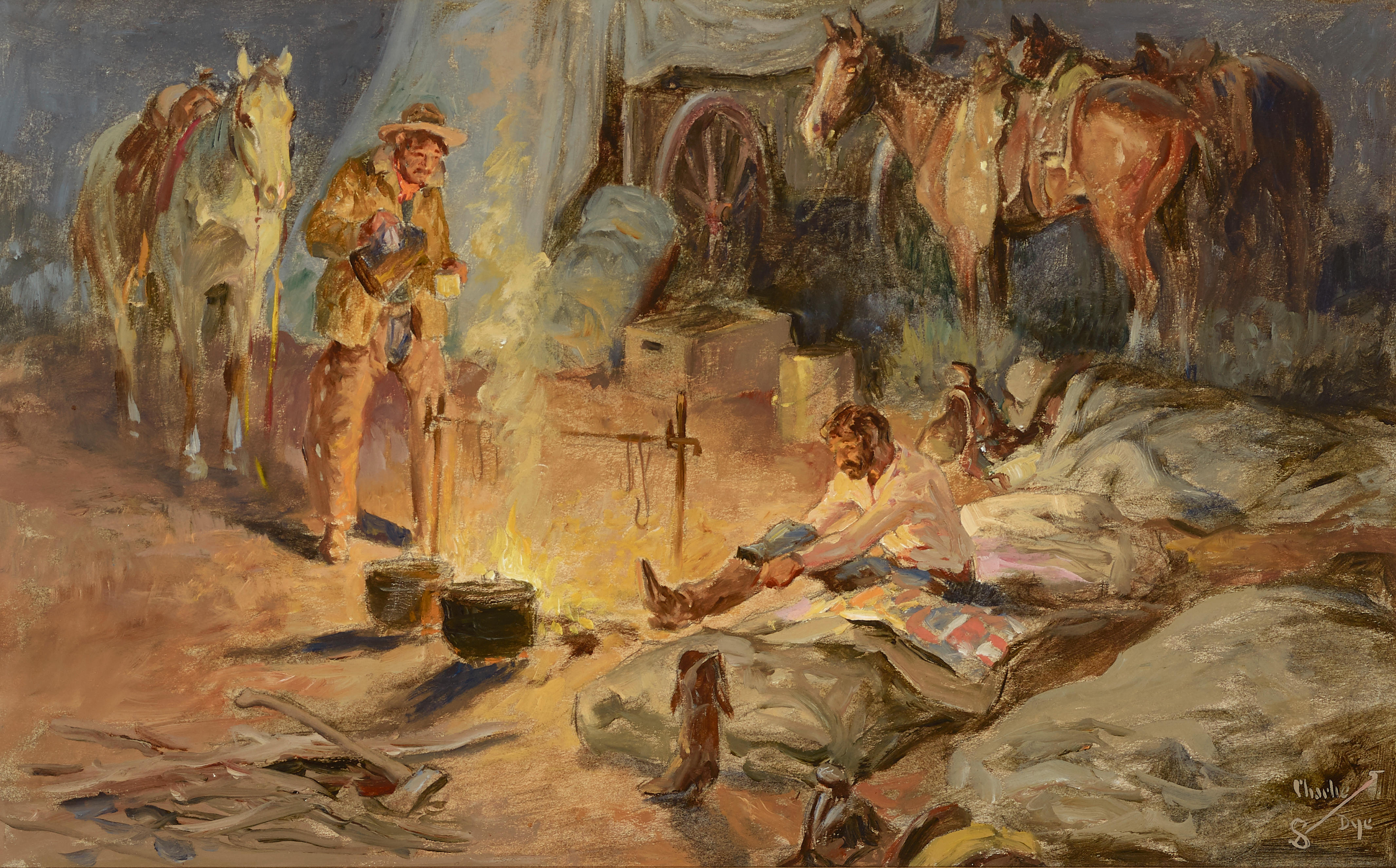
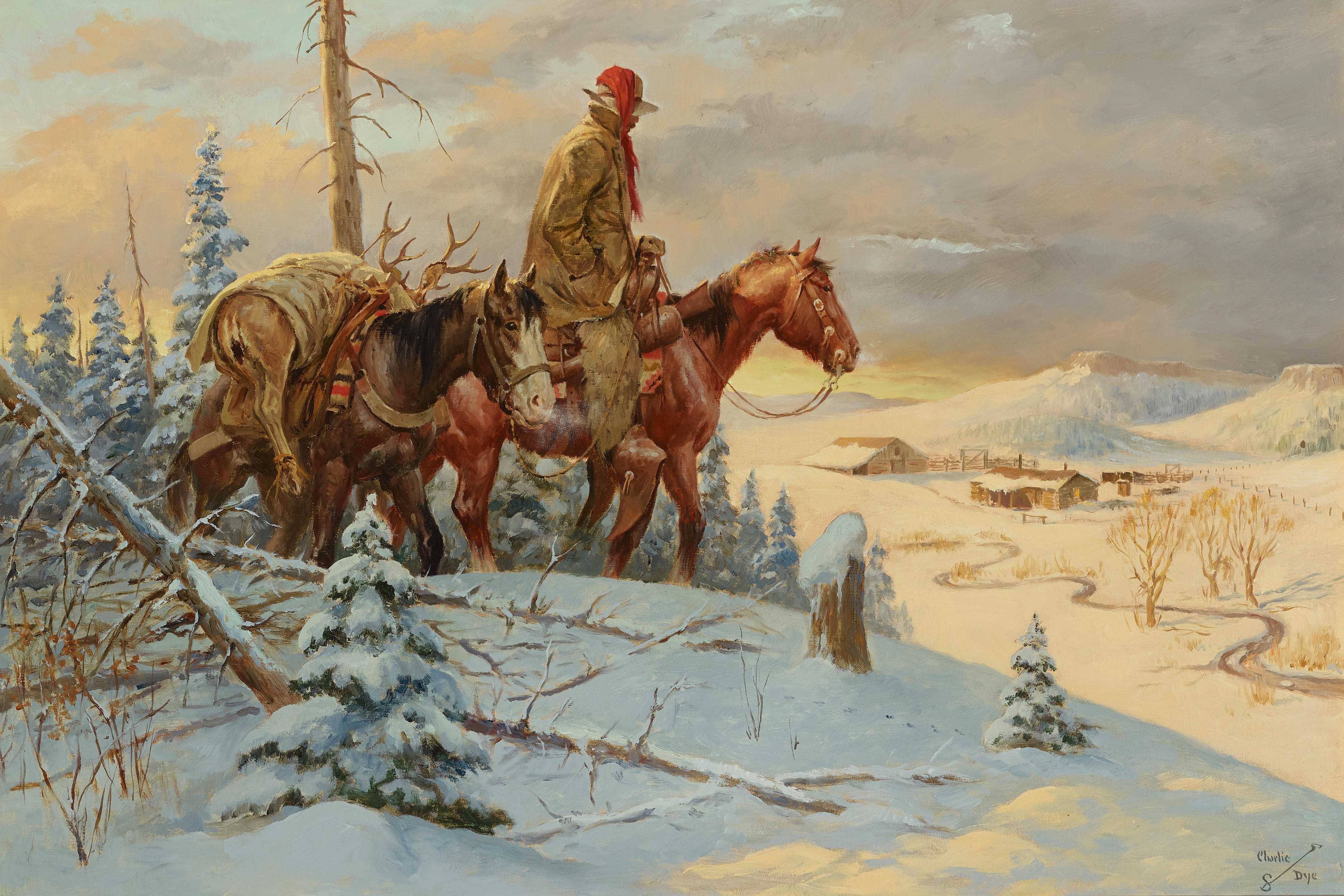


.jpg)
.jpg)


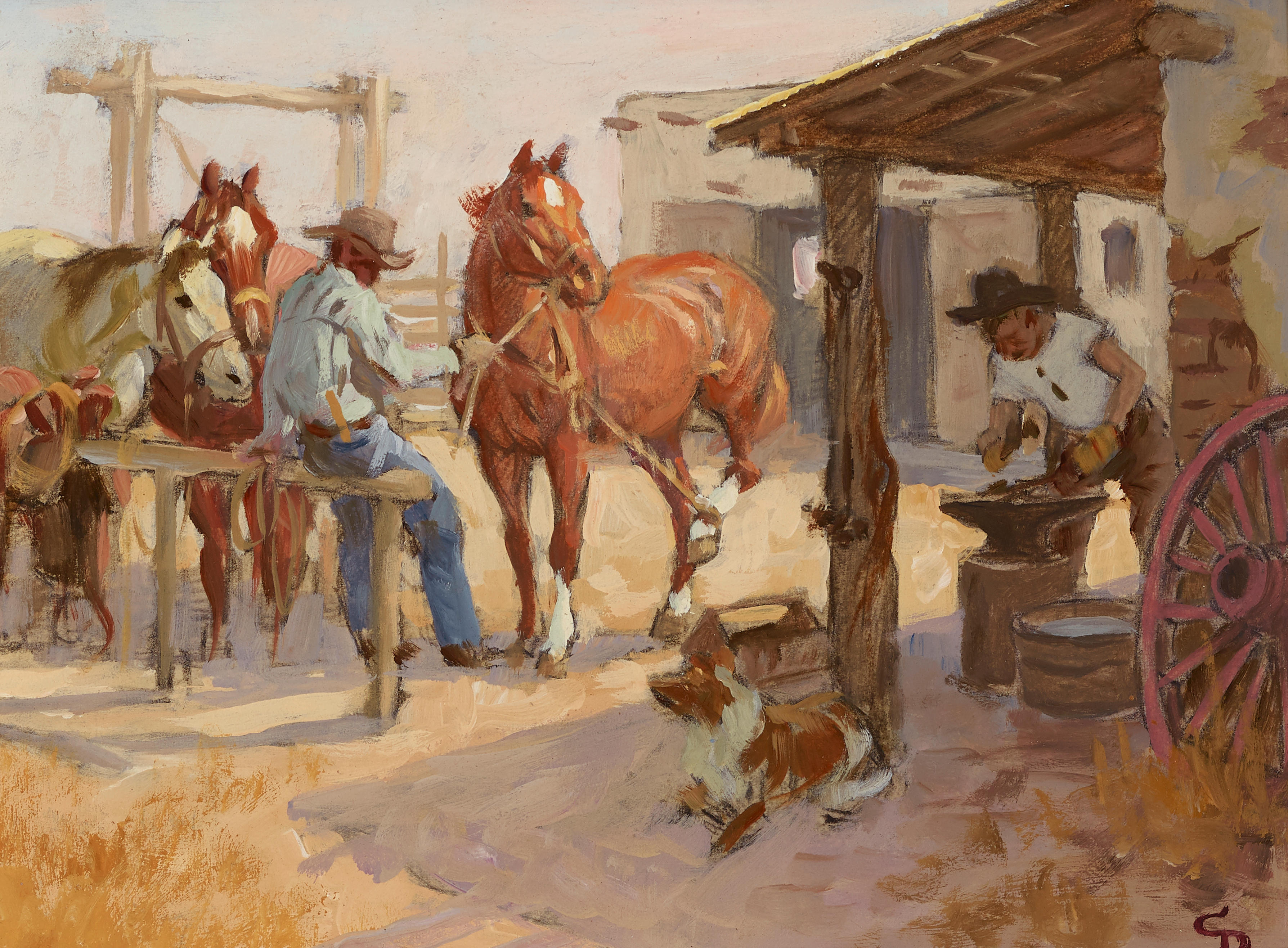



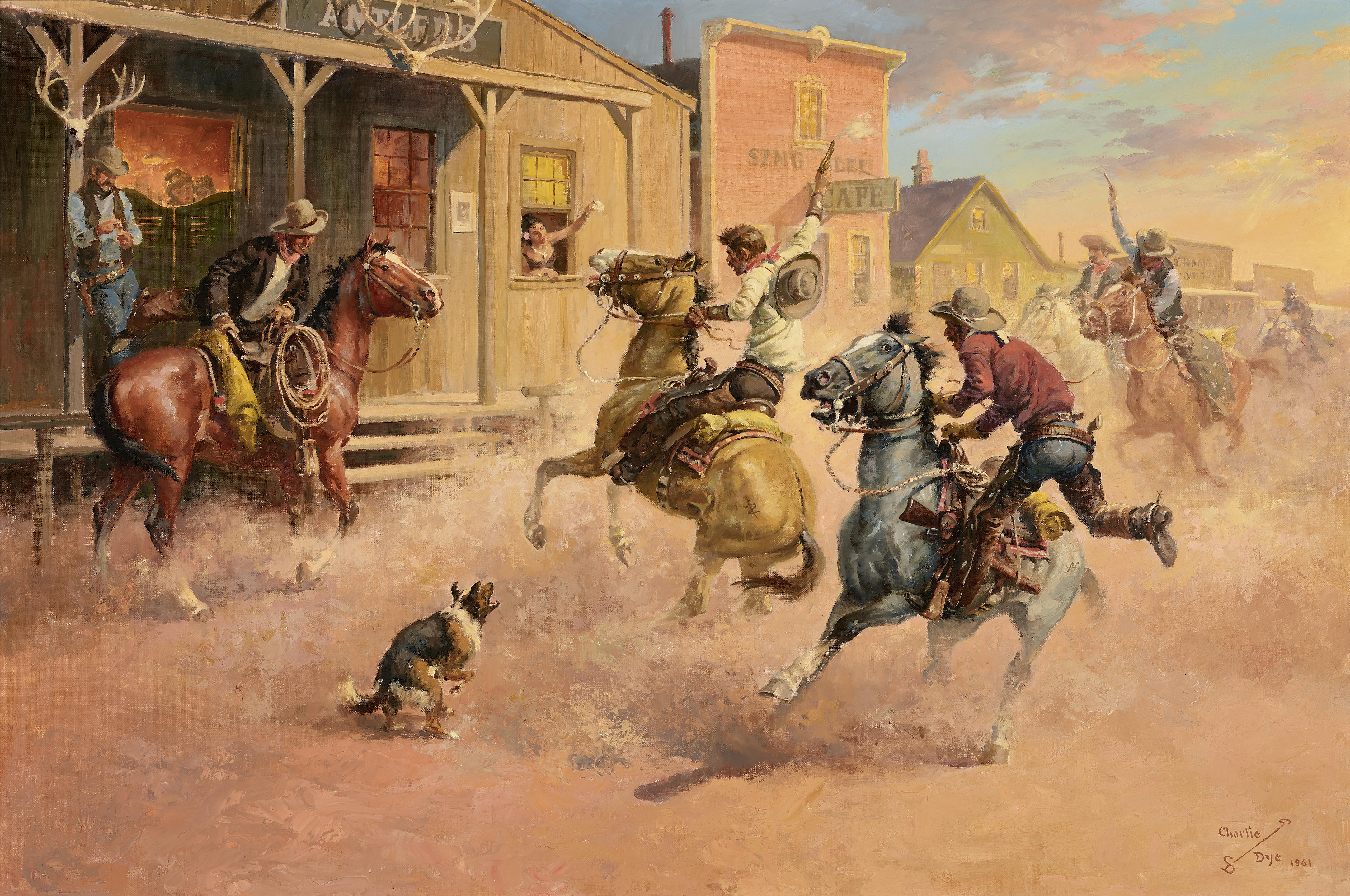
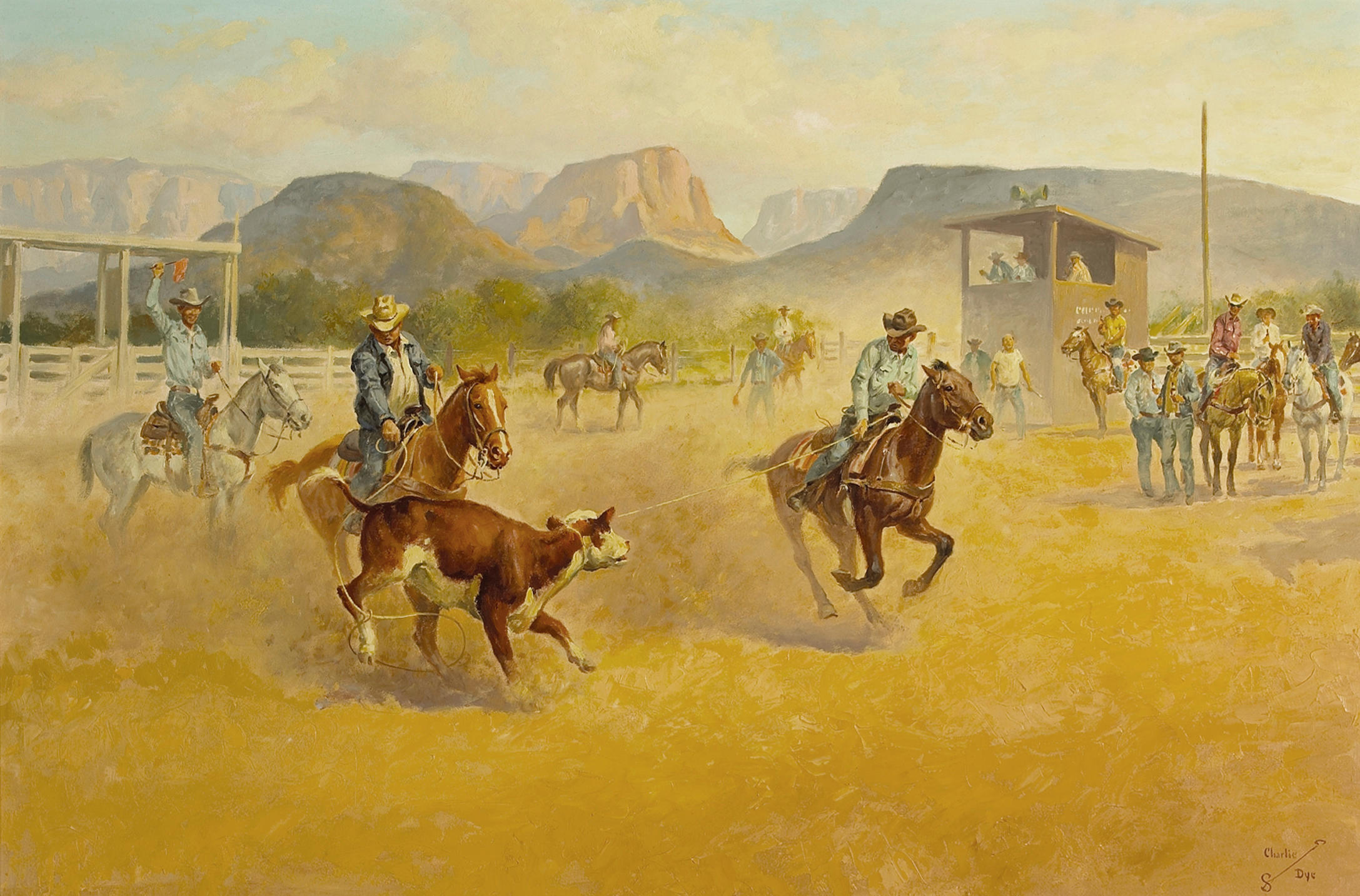
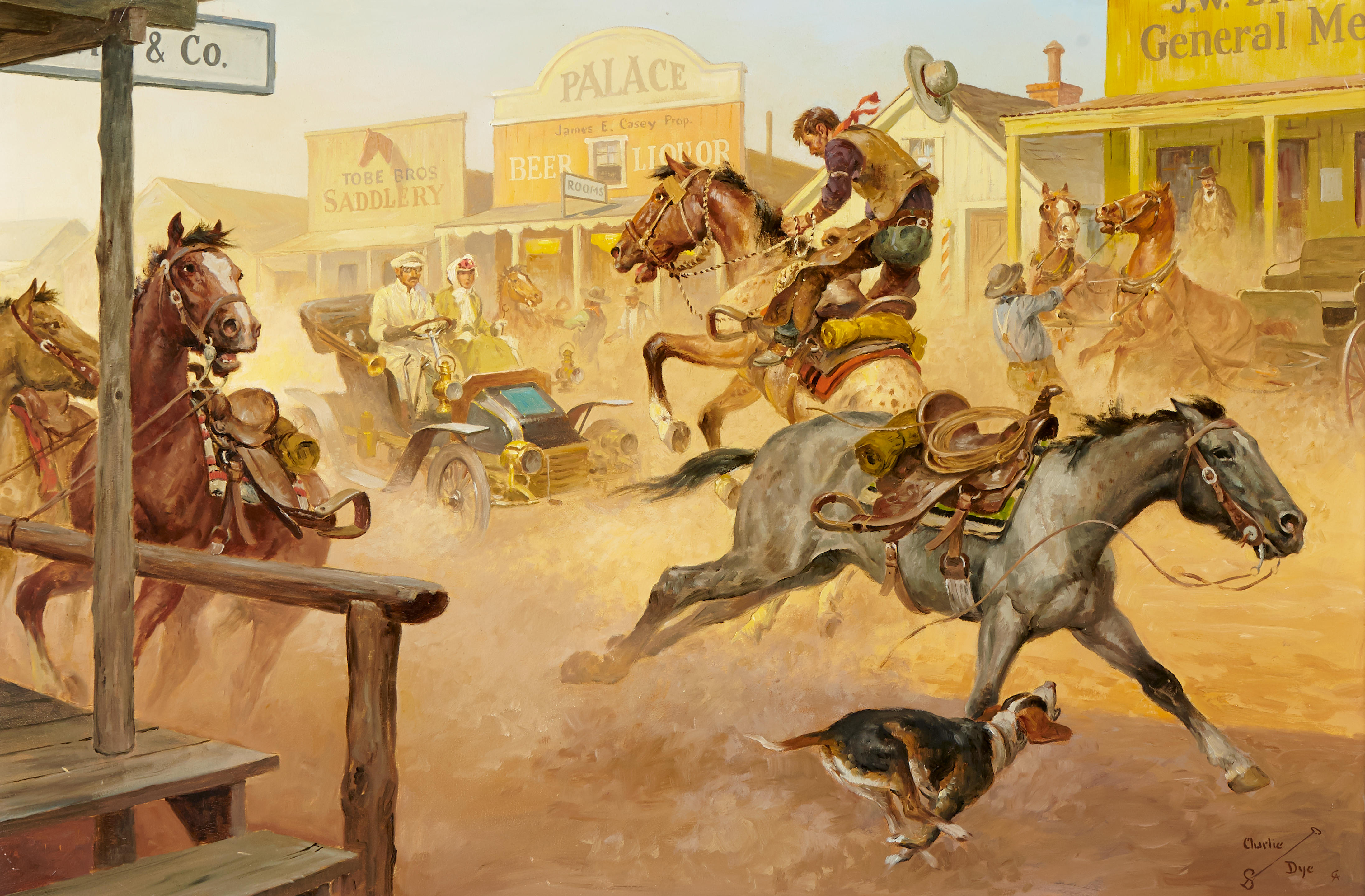
Testen Sie LotSearch und seine Premium-Features 7 Tage - ohne Kosten!
Lassen Sie sich automatisch über neue Objekte in kommenden Auktionen benachrichtigen.
Suchauftrag anlegen